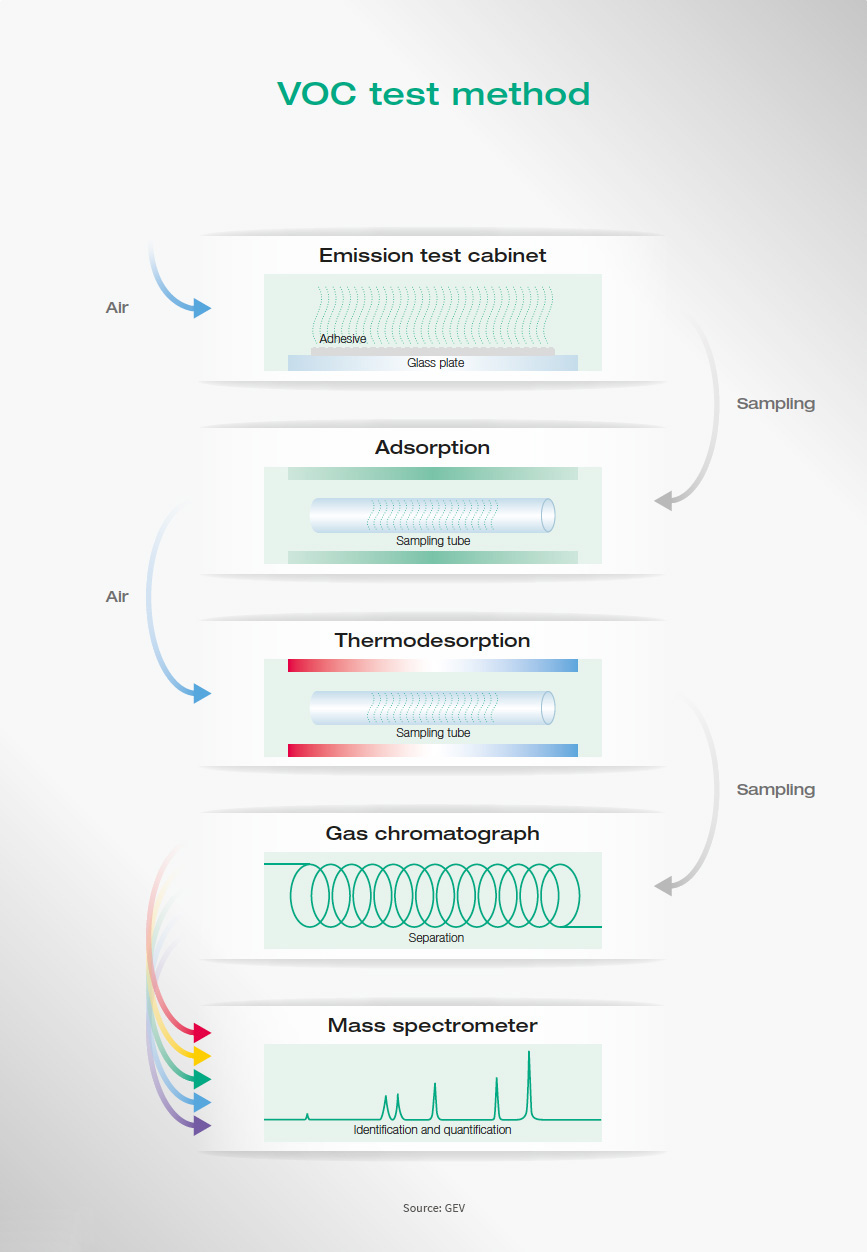Test method
By using highly sensitive laboratory analysis techniques, such as gas chromatography and mass spectrometry, and by following standardized test procedures, even the smallest traces of volatile organic compounds (VOCs) in the air can be identified and quantified. For this purpose, samples of the materials are placed into test chambers made of stainless steel with a volume of 100 to 1000 liters. In these test chambers, typical indoor climates are simulated. The chamber is continuously flushed with clean air to ensure that the air inside is completely exchanged every 2 hours. The temperature is 23 °C; relative humidity of the incoming air is 50 %. Measurements are taken after 3 days and 28 days by sampling and analyzing the exhaust air from the test chamber.
The test can be terminated when all classification values are complied with, but not before 10 days. The measurements are performed to detect and record concentrations of volatile organic compounds (VOCs), carcinogenic as well as semi-volatile organic compounds (SVOCs). The test method is constantly reviewed and adjusted to reflect the state of the art. It is used for initial testing when a license application is received and as an evaluation basis for each subsequent quality check. Only laboratories accredited in accordance with ISO 17025 can be commissioned to perform the tests.
Do You Have Questions?
If you have any questions on certain topics or want to contact us for another reason, please contact us by phone or email.

